Books and films to navigate grief with your young child from a parent who’s been there
This is a guest post by Hannah Ege, whose husband Sheria Musyoka was hit and killed by a driver in San Francisco. After losing Sheria, Hannah and son Theo relocated to Philadelphia where they are rebuilding their lives and honoring Sheria’s legacy. Hannah is a writer, teacher, advocate, and parent. Hannah writes educational content as well as poetry, non-fiction, and fiction. Hannah is part of the Families for Safe Streets community.
When my husband Sheria was hit and killed while on a run in San Francisco on February 4, 2021, I didn’t know how I would make it through the overwhelming heartbreak and trauma of losing him.
But I had to, because I was now the sole caregiver to our child, who was just three years old at the time.
On our journey in the aftermath of losing Sheria, I found books and movies that address death and grief that helped both of us find the language to better express what we were experiencing.
For anyone who is helping a young child in their grief, I hope that these resources help foster connection, safety, and comfort for you as a caregiver and for your child. Although there are a host of other resources available, these are the top ten that helped us in the first two years after losing our beloved Sheria and Daddy.
Books for Preschool and Early Elementary Aged Kids About Death and Grief
Books and stories can be a helpful way to explain the complicated concept of death. Reading together fosters intimacy and connection between you and your child, and can create a safe place for your child to better be able to hear and process the unknown around death.
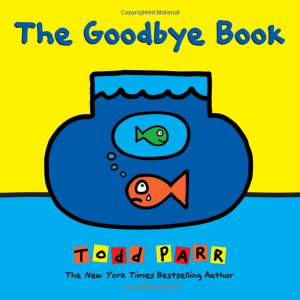 The Goodbye Book by Todd Parr
The Goodbye Book by Todd Parr
The Goodbye Book portrays death in a concrete, simple way that young children can conceptualize and begin to find the words for. It illustrates how someone might leave unexpectedly and the various reactions you might have: confusion, lack of interest in things, being sad, being angry, and more.
How it helped us: This book helped me and my child begin talking about the death of their dad and allowed them to better understand the permanence of death.
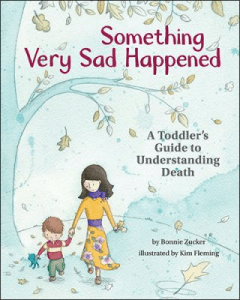 Something Very Sad Happened by Bonnie Zucker
Something Very Sad Happened by Bonnie Zucker
Starting with a letter of support and solidarity in grief, the author of this book shows how to use this book as a tool for your toddler in grief. It helps explain death in very concrete and simple terms, but also in a way that does not add further trauma.
How it helped us: “When someone dies, their body stops working.” This line alone helped my child to understand what being dead even means as it wasn’t something they had experienced yet in their life. It was a launching point for a further conversation around the nature of their dad’s passing, why things randomly happen, and even had us talking about street safety and ways to be careful within our day-to-day living.
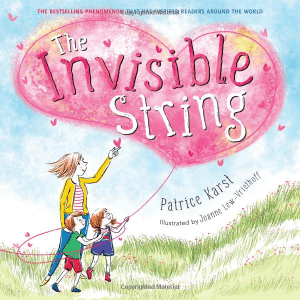 The Invisible String by Patrice Karst
The Invisible String by Patrice Karst
For those who may not be religious, this book really helps explain to young minds how we can stay connected to our loved ones even in death. The Invisible String explains how love is a force that can connect us no matter distance, time or death. Our loved ones will always be with us, connected by their love and care for us. Even when people die, their love continues on.
How it helped us: As someone dealing with religious trauma from my childhood, talking about what happens after death brought up a lot for me as a parent. This book helped me begin having those discussions with my child, without clouding the conversation with my own trauma and confusion around what I believe. It gave me a concrete concept to work with and to remind my kid that their Daddy is always connected to us through love. Not even death can sever that tie.
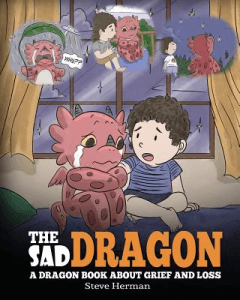 The Sad Dragon by Steve Herman
The Sad Dragon by Steve Herman
Not only does this book illustrate the process of grief and loss in all its stages, but it also can be helpful for children who may be experiencing a drastic life change due to their caregiver passing.
In The Sad Dragon, the dragon loses his caregiver and is placed with a new family – one he knows and loves already, but who are not his caregivers. The story shows how grief may come in many different forms and change day from day. It gives reassurance that it’s okay to be angry, mad, and upset about losing the person you love. It also shows how your child might experience guilt and fear of being the person who caused their caregiver to die, and ways to navigate that conversation together.
How it helped us: This book helped me and my child begin conversation about how they are feeling and put a name to some of the big, complicated emotions that are so hard to express with words.
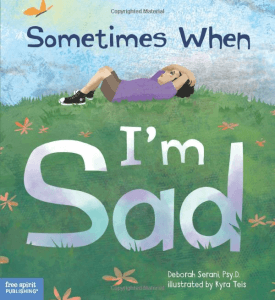 Sometimes When I’m Sad by Dr. Deborah Serani
Sometimes When I’m Sad by Dr. Deborah Serani
Although this book does not explicitly talk about death, it does talk a lot about feelings of sadness, grief, and anger. Written from the child’s perspective, it shows how big feelings may lead to different behaviors: hiding, wanting to lay in bed all day, crying, throwing things, and more. It further shows ways you can comfort yourself to move through these feelings without hurting other people or yourself more, while validating that these feelings are normal and okay.
How it helped us: Having big, complicated feelings myself, this book helped me as a parent to explain to my child why my mood, reactions and day-to-day wellbeing were so unpredictable in the first year of grief. It helped my child understand the grieving process that I was going through, as it was very different from their own grief. It also allowed them to have the words and language to express themselves on hard days and be able to identify that they were sad.
Movies for Elementary Aged Kids About Death and Grief
While I found books so helpful in providing language, guidance, and concrete examples for working through grief, I found some movies that helped us navigate our feelings in different ways. Seeing representation of loss, death, trauma, and family separation can help children make sense of their world and affirm to them that the things they are experiencing are a universal human experience – and that feeling of “not aloneness” can bring a lot of comfort.
Movies can also create a safe space and time period where children can allow their feelings to flow in response to the movie, and in turn work through their own grief. Each of these movies hit a soft spot for us, and were repeat watches in the first two years of grieving.
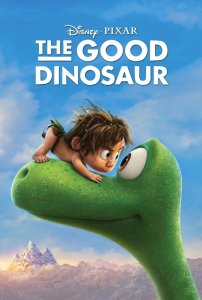 The Good Dinosaur
The Good Dinosaur
Great for children ages 3-12
Arlo is the baby of the family and has a hard time finding his spot within his family structure. While trying to prove his worth, Arlo and his dad end up getting caught in a storm that ends up killing his father right in front of Arlo. The rest of the movie follows Arlo as he tries to make it back to his family after getting lost, making an unexpected friend and learning his own strength as he travels far and wide in his return home.
How it helped us: I really appreciated the way this movie shows the traumatizing loss of Arlo’s dad and the way it impacts Arlo. Although some children might find it hard to watch, when your child has lived through traumatizing and upsetting realities in their life, it can be comforting to see that represented through a story.
Watching a young character move through the stages of grief, experience PTSD flashbacks, and then overcome unexpected challenges helped my child know that they were not alone. It allowed us to have conversations about how life does not always go as we plan, how things outside of our control can sometimes end in death and how sometimes it feels like you can’t escape those scary moments in your head. Seeing a character in a movie have PTSD flashbacks helped my kid open up about the flashbacks they experience and ways they needed support when those flashbacks happen.
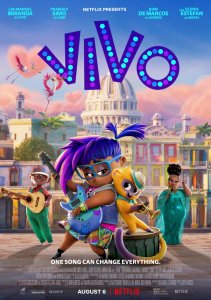 Vivo
Vivo
Great for children ages 2-12
Following the journey of Andres’ pet, Vivo, and grand-niece, Gabi, after Andres death, Vivo is a lighthearted film filled with lots of fun, catchy songs that tackles the hard question of how people live on after death.
Vivo mourns the loss of his caregiver ,and questions how he is supposed to keep going on without Andres. By the end of the film, Vivo recognizes that death can’t truly keep our loved ones gone, as their love continues on through the love we share with others.
How it helped us: As we moved through grief and began finding ways to memorialize Sheria in our daily life, Vivo helped my child recognize how concrete things like music, song and art is a way we can remember our loved ones. Creating a playlist of all the songs that reminded us of Sheria was helpful to us and is something we use whenever we are missing him most.
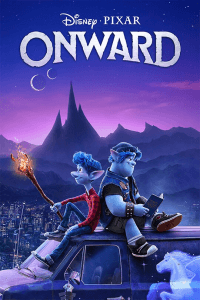 Onward
Onward
Great for children ages 4-12
In this magical world that has lost its magic, two brothers go on a quest to help bring their dad back for just one last day together. Throughout their adventures, the brothers grow closer together and end up bringing magic back to their modern world. Although the main character, Ian, doesn’t get a chance to do all the last-day things he wanted with his dad, Ian realizes the importance of family, community and shared grief. Both brothers recognize that despite losing their father when young, they each have a part of him within themselves that lives on.
How it helped us: Grief manifests itself very differently, even within the same family. Watching Onward and seeing how two brothers and their mother navigated grief and getting one last day with their loved one opened up room for conversations about how we each experience the loss of Sheria. It also helped us continue the conversation of how a loved one never truly leaves because our shared love lives on beyond death. This movie does an excellent job of talking about grief even years after losing someone and how that grief will change over the years. I have no doubt we will continue to rewatch this film and use its story as a way to continue conversations around our loss.
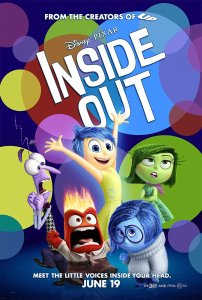 Inside Out
Inside Out
Great for children ages 2-10
This creative and fun-filled film portrays emotions as five characters – Joy, Sadness, Anger, Disgust, and Fear – that help control Riley’s day-to-day decision making and happiness. But after a drastic move that does not go as smoothly as planned, Riley struggles to be happy with the transition. Through a series of adventures, Joy learns that Sadness can’t just be ignored, but must be given space to take control in order for Riley to process the changes. Although this film does not tackle death in particular, it does address grief, transitions and working through big feelings.
How it helped us: Having characters that manifest core emotions helped my child better understand and be able to verbalize the big feelings they experience. The movie ends with Joy recognizing the place Sadness must have in order to process change and together they move forward to create safety and stability for Riley. Seeing such a concrete illustration of how sadness is not a weakness or something to be afraid of gave my child the courage to express their sadness when needed.
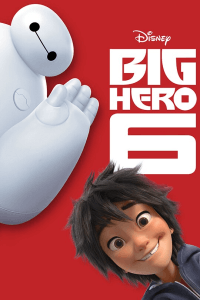 Big Hero 6
Big Hero 6
Great for children ages 4-12
After losing his brother in a traumatizing event, Hiro experiences severe grief, guilt and depression as he doesn’t know how to continue on after the loss. In an unexpected turn of events, Hiro makes a unique friend, Baymax, who helps him work through the many stages of grief. Hiro almost loses himself and hurts Baymax while in the anger stage of grief, but thanks to the unlikely community that has surrounded him in the process, Hiro is able to lean on friends and let them hold him in his grief.
How it helped us: Losing someone close to you will often show you who in your community is actually there for you. Navigating grief within friendships and connections creates its own set of challenges, and this can be confusing for young kids. Watching Big Hero 6 helped both me and my child create context for these changes as we navigated our community shifting and changing. Being able to name the people who stood by us throughout the first two difficult years helped my child find stability and safety when so many things felt uncertain.
Are you someone who has been personally and directly affected by a traffic crash? Learn more about San Francisco Bay Area Families for Safe Streets.
Banner image by Hannah Ege




